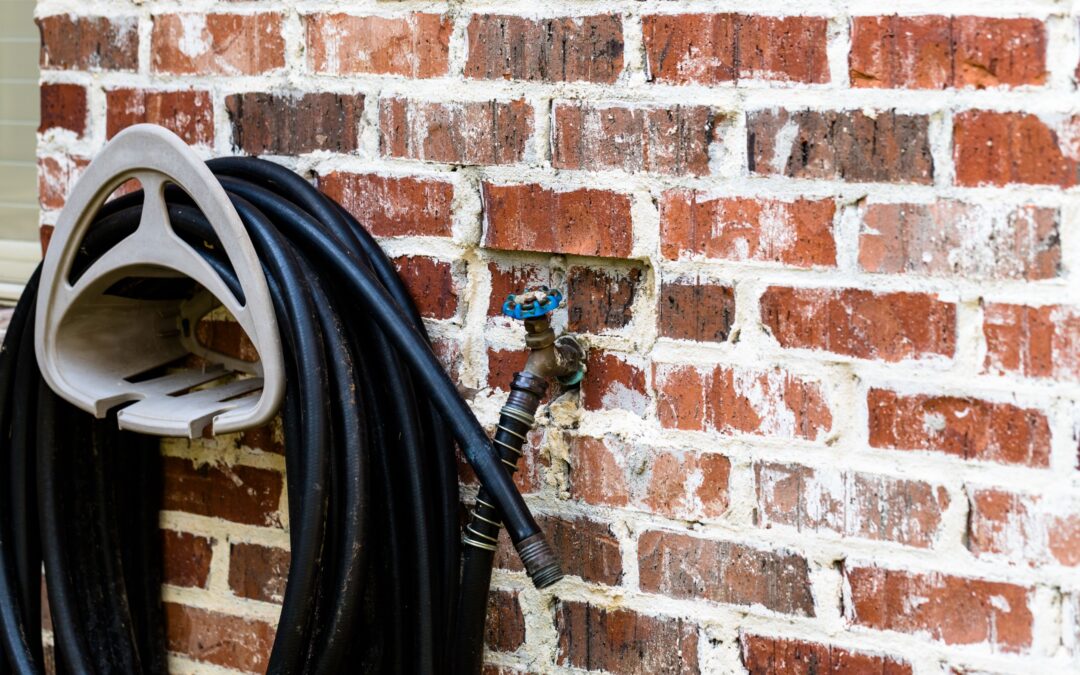Winter weather is fast approaching if it has not already arrived where you live. And like every winter, it’s important to make sure your plumbing is prepared to handle freezing temperatures.
It’s critical to winterize your home to eliminate cold weather-related plumbing problems. You will save headaches and potentially expensive plumbing repair bills with some careful preparation and foresight.
Outdoor faucets or spigots are particularly vulnerable to winter weather. You’ve probably got at least one and keep a hose connected throughout the summer for yard work, car washing and watering your lawn. You may not give them a second thought as the calendar turns over into winter and the temperatures drop, but leaving a hose connected to a spigot can be a real problem.
Remember to disconnect your hose
As you winterize, it’s very important to remember to disconnect the hose for winter. A hose connected to an outside faucet is exposed to the elements. The water inside the hose can rapidly freeze when the temperature drops below 32 degrees. Burst outside spigots is a potentially expensive problem that is relatively easy to avoid. On the other hand, spigots without a hose attached are much less likely to freeze and generally don’t cause freezing problems.
What happens if you don’t disconnect your hose?
If you forget to disconnect your hose before temperatures begin to drop, your hose can freeze, and suddenly you have ice in the spigot and pipes inside your home. Left unattended, the frozen water can continue to expand until it bursts the supply pipe leading to the spigot itself. When the ice inside the supply pipe thaws, the melting water inside the pipe escapes through the rupture and can flood your home. You can have a nasty surprise and a mess to clean up. Worse yet, your home can be severely damaged if the incident happens while you are away.
How long does it take to freeze?
Depending on the location of your home, it doesn’t take long for problems to happen as a pipe can freeze in only four to five hours. It can occur even faster if the temperature drops suddenly and stays below freezing for an extended period. Freezing time can vary according to how low the temperature gets and the amount and type of insulation on the pipe.
A pipe’s vulnerability also depends on variables such as the pipe’s location being adjacent to an exterior wall, or if they are exposed to heated interior air or a heating source like a furnace. In cold climates, it’s important to be particularly vigilant to avoid frozen pipes bursting and creating damage by flooding areas inside your home.
What should I do if I forget to disconnect my hose?
Forget to disconnect your hose before winter arrives? Fortunately, there are ways to manage a frozen pipe before it bursts and creates a mess. If you find yourself in this situation, follow these steps to thaw a frozen spigot. In most cases, this easy-to-follow method will solve the problem by getting your pipes thawed before they can burst.
- Disconnect that hose.
- Open the spigot.
- Wrap the spigot and supply pipe in rags or towels.
- Pour hot water over the wrapped spigot.
- Continue until the flow returns.
- Let the water run for 2-3 minutes.
- Leave the spigot slightly open to allow for a constant trickle.
By leaving the water trickling, you leave just enough of a flow to prevent the pipe from freezing again. In the event you can’t restore water flow, it is recommended that you call a plumber to help.
Bieg Plumbing is here to help!
If you do find yourself with a burst pipe or spigot, you can depend on one of our certified plumbers to resolve your problem quickly and professionally.
We’ve been in business for more than 60 years, so we have the experience to expertly diagnose and fix any plumbing issue!
Frozen pipes got you stuck? Call in the red truck!

